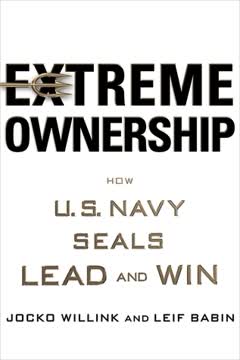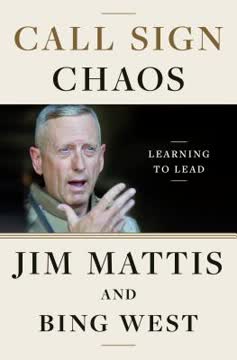Key Takeaways
1. Honor and integrity are the foundation of great leadership
Death Before Dishonor
Integrity is essential. Leaders must have a strong moral compass and adhere to a personal code of conduct. This provides an anchor for decision-making and helps maintain the trust and respect of those you lead. Without honor and integrity, any accomplishments will be tainted and the culture of the organization will suffer.
Actions speak louder than words. Demonstrate your integrity through consistent behavior, even when it's difficult. Own your mistakes, correct problems quickly, and always strive to do what's right. This builds credibility and inspires others to follow your example.
Key aspects of integrity in leadership:
- Be honest in all dealings
- Follow through on commitments
- Treat others fairly and with respect
- Make decisions based on principles, not personal gain
- Take responsibility for your actions and those of your team
2. Trust is built over time through consistent actions and competence
You can't surge trust.
Trust requires both character and competence. People may initially trust you based on your reputation or position, but lasting trust is earned through consistently demonstrating good character and the ability to deliver results. This takes time and cannot be rushed or faked.
Actions to build trust:
- Show up early and work hard
- Have a clear plan and follow through
- Share in both successes and hardships
- Admit mistakes and learn from them
- Demonstrate care for your team's wellbeing
Building trust creates a foundation for effective leadership. When your team trusts you, they are more likely to follow your direction, take initiative, and work cohesively towards shared goals. This trust becomes especially critical during challenging times or when quick decisions are needed.
3. When in command, lead with confidence and decisiveness
When in command, command.
Embrace the responsibility of leadership. As a leader, you are expected to make tough decisions and lead from the front. Your team looks to you for guidance and direction, especially in difficult situations. Project confidence, even if you feel uncertain internally.
Key aspects of commanding leadership:
- Be decisive and take action
- Communicate clearly and with authority
- Stay calm under pressure
- Take responsibility for outcomes
- Inspire and motivate your team
Remember that you were chosen to lead for a reason. Trust your instincts and experience, but also be open to input from your team. Strive to balance confidence with humility, and always put the needs of the mission and your team first.
4. Hope is not a strategy: Develop a clear plan and work hard
Hope Is Not a Strategy
Vision alone is not enough. While hope and inspiration are important, they must be backed by concrete planning and hard work. Develop a clear strategy that outlines how you will achieve your goals, and then put in the effort to make it happen.
Elements of effective strategy:
- Clear vision and objectives
- Detailed action plan
- Resource allocation
- Measurable milestones
- Contingency plans
Communicate your strategy clearly to your team and ensure everyone understands their role. Regular check-ins and adjustments may be necessary as you progress. Remember that strategy without execution is merely wishful thinking.
5. No plan survives first contact: Always have contingencies
No plan survives first contact with the enemy.
Expect the unexpected. Even the best-laid plans can go awry when faced with real-world challenges. Anticipate potential problems and develop contingency plans to address them. This preparedness allows you to adapt quickly when things don't go as planned.
Developing contingencies:
- Identify potential risks and obstacles
- Create alternate plans for various scenarios
- Ensure team members understand backup procedures
- Practice responding to unexpected situations
- Maintain flexibility in your approach
While you can't predict every possible outcome, having a mindset of adaptability and a range of options will help you navigate unforeseen challenges more effectively. Regular scenario planning and "what if" discussions with your team can improve overall readiness.
6. Communicate clearly and frequently with your team
Communicate, communicate, communicate.
Overcommunication is key. Ensure that your vision, goals, and expectations are clearly understood at all levels of the organization. Use multiple channels and formats to reinforce important messages. Equally important is creating opportunities for feedback and listening to your team.
Effective communication strategies:
- Regular team meetings and briefings
- Written directives and guidelines
- One-on-one check-ins
- Open-door policies
- Multi-channel approach (email, in-person, video, etc.)
Clear communication helps align efforts, reduce misunderstandings, and build trust within the team. It's especially crucial during times of change or crisis. Remember that communication is a two-way street – actively seek input and feedback from your team to ensure your message is being received and understood as intended.
7. Set high standards and hold people accountable
It pays to be a winner!
Establish a culture of excellence. Set clear, high standards for performance and behavior. Communicate these expectations consistently and lead by example. When standards are met or exceeded, offer recognition and praise. When they're not met, provide constructive feedback and hold people accountable.
Implementing high standards:
- Clearly define expectations
- Provide necessary training and resources
- Regularly assess performance
- Offer timely feedback (both positive and constructive)
- Address underperformance promptly and fairly
High standards create a sense of pride and motivation within the team. They attract high performers and push everyone to continually improve. Remember that accountability goes both ways – be open to feedback on your own performance and hold yourself to the same high standards you expect from others.
8. Engage with your team at all levels to understand their needs
A shepherd should smell like his sheep.
Stay connected to the front lines. Regularly engage with team members at all levels of the organization. This hands-on approach helps you understand the day-to-day realities of your operation, build relationships, and make more informed decisions.
Ways to engage with your team:
- Walk the floor or visit work sites regularly
- Participate in training exercises or projects
- Have informal conversations with team members
- Seek input on decisions that affect the team
- Share in both the challenges and successes
By staying closely connected to your team, you gain valuable insights, build trust, and demonstrate that you value their contributions. This engagement also helps you identify potential issues or opportunities early on, allowing for more proactive leadership.
9. Inspect what you expect to ensure compliance and quality
Expect what you inspect.
Regular inspections maintain standards. Develop a system of checks and balances to ensure that your expectations are being met consistently. This isn't about micromanagement, but rather creating a culture of accountability and continuous improvement.
Implementing effective inspections:
- Establish clear metrics and benchmarks
- Conduct regular, scheduled reviews
- Use both formal and informal assessment methods
- Provide immediate feedback on findings
- Use inspection results to inform training and process improvements
Remember that inspections aren't just about finding faults – they're an opportunity to recognize good work, identify best practices, and ensure that resources are being used effectively. A well-designed inspection process can actually boost morale by demonstrating your commitment to excellence and fairness.
10. Overload your efforts when facing doubts or challenges
When in doubt, overload.
Double down on effort. When facing setbacks, doubts, or significant challenges, the best response is often to increase your efforts. This demonstrates resilience, creates new opportunities, and can help overcome obstacles through sheer determination.
Strategies for overloading:
- Extend working hours temporarily
- Seek additional training or education
- Take on extra responsibilities
- Volunteer for challenging assignments
- Immerse yourself in studying the problem
Overloading isn't sustainable long-term, but it can be a powerful tool for pushing through difficult periods or proving yourself in new roles. It shows commitment and can inspire similar efforts from your team. However, be mindful of burnout and ensure you're maintaining a healthy work-life balance overall.
11. Make ethical decisions that can withstand scrutiny
Can you stand before the long green table?
Consider the long-term implications. When making decisions, especially difficult ones, ask yourself if you could justify your actions to a panel of reasonable people. Ensure that your choices are not only legal, but also ethical and aligned with your organization's values.
Ethical decision-making framework:
- Identify the ethical issue
- Gather relevant information
- Consider alternative actions
- Evaluate potential consequences
- Make a decision based on principles
- Reflect on the outcome and learn
By consistently making ethical decisions, you build trust, protect your reputation, and create a culture of integrity within your organization. Remember that short-term gains achieved through unethical means often lead to long-term problems.
12. Build strong relationships and support systems
Always have a swim buddy.
No one succeeds alone. Cultivate strong relationships with mentors, peers, and team members who can provide support, guidance, and honest feedback. These connections are crucial for navigating challenges, celebrating successes, and maintaining perspective.
Building a support network:
- Seek out mentors in your field
- Foster peer relationships with other leaders
- Invest time in team-building activities
- Participate in professional organizations
- Cultivate relationships outside of work
Strong relationships provide a safety net during difficult times and can open doors to new opportunities. They also help create a more positive and collaborative work environment. Remember to be a good "swim buddy" to others as well, offering your own support and guidance when needed.
Last updated:
FAQ
What's "The Wisdom of the Bullfrog: Leadership Made Simple" about?
- Leadership Lessons: The book is a collection of leadership lessons drawn from Admiral William H. McRaven's extensive military career, particularly his time as a Navy SEAL.
- Personal and Professional Insights: It combines personal anecdotes with professional insights to provide guidance on effective leadership.
- Military and Beyond: While rooted in military experiences, the lessons are applicable to leadership roles in various fields, including business and education.
- Simple Yet Challenging: The book emphasizes that while leadership principles are simple, their execution can be challenging.
Why should I read "The Wisdom of the Bullfrog: Leadership Made Simple"?
- Proven Experience: Admiral McRaven shares lessons from his 37-year career in the Navy, offering insights from someone who has led at the highest levels.
- Practical Advice: The book provides actionable advice that can be applied to leadership roles in any industry.
- Inspirational Stories: Through engaging stories, the book inspires readers to embrace leadership challenges with confidence and integrity.
- Universal Principles: The leadership principles discussed are timeless and relevant to anyone looking to improve their leadership skills.
What are the key takeaways of "The Wisdom of the Bullfrog: Leadership Made Simple"?
- Integrity is Crucial: Being a person of integrity is foundational to effective leadership.
- Trust and Competence: Building trust through competence and character is essential for leaders.
- Communication is Key: Clear and consistent communication is vital for aligning and motivating teams.
- Adaptability and Planning: Leaders must be adaptable and have contingency plans for unexpected challenges.
What are the best quotes from "The Wisdom of the Bullfrog: Leadership Made Simple" and what do they mean?
- "The Only Easy Day Was Yesterday": This SEAL mantra emphasizes the need for continuous effort and resilience in leadership.
- "Run to the Sound of the Guns": Encourages leaders to confront challenges head-on rather than avoiding them.
- "Hope Is Not a Strategy": Stresses the importance of detailed planning and preparation over wishful thinking.
- "A Shepherd Should Smell Like His Sheep": Highlights the importance of leaders being in touch with their team and understanding their challenges.
How does Admiral McRaven define leadership in "The Wisdom of the Bullfrog"?
- Task Accomplishment: Leadership is about accomplishing tasks with the people and resources available while maintaining integrity.
- Inspiration and Management: A good leader inspires their team and effectively manages resources to achieve goals.
- Reputation Maintenance: Leadership also involves maintaining or enhancing the reputation of the institution.
- Simple Yet Difficult: While the principles of leadership are simple, their execution can be difficult due to human weaknesses.
What is the significance of the title "The Wisdom of the Bullfrog"?
- Bull Frog Title: The title "Bull Frog" refers to the longest-serving active-duty Navy SEAL, a title McRaven held.
- Experience and Wisdom: It symbolizes the experience and wisdom gained from a long career in leadership roles.
- Metaphor for Leadership: The bullfrog represents resilience and adaptability, qualities essential for effective leadership.
- Personal Journey: The title reflects McRaven's personal journey and the lessons he learned over his career.
What is the "Death Before Dishonor" chapter about in "The Wisdom of the Bullfrog"?
- Honor and Integrity: The chapter emphasizes the importance of honor and integrity in leadership.
- Historical Context: It references historical figures and military traditions that valued honor above all else.
- Personal Code: Leaders are encouraged to have a personal code of conduct to guide their decisions.
- Legacy and Reputation: Without honor, a leader's accomplishments may lack lasting value and impact.
How does "The Wisdom of the Bullfrog" address the concept of trust in leadership?
- Trust Cannot Be Rushed: Trust is built over time and cannot be surged or expedited.
- Character and Competence: Trust is based on both the character and competence of the leader.
- Personal Engagement: Leaders must engage personally with their team to build trust.
- Consistency and Delivery: Consistently delivering on promises is crucial for maintaining trust.
What does "When in Command, Command" mean in "The Wisdom of the Bullfrog"?
- Decisive Leadership: Leaders must be decisive and confident in their actions.
- Command Presence: A leader should always appear in control, even in challenging situations.
- Trust in Abilities: Leaders are chosen for their abilities and should trust their instincts.
- Inspire Confidence: A leader's confidence inspires confidence in their team.
How does Admiral McRaven suggest handling failure in "The Wisdom of the Bullfrog"?
- Learn from Mistakes: Failure is an opportunity to learn and improve.
- Overcome Doubts: When in doubt, work harder to overcome challenges and doubts.
- Resilience and Effort: Resilience and increased effort can help turn failures into successes.
- Accountability: Accept responsibility for failures and use them as a stepping stone for growth.
What role does communication play in leadership according to "The Wisdom of the Bullfrog"?
- Clarity and Consistency: Clear and consistent communication is essential for effective leadership.
- Two-Way Communication: Leaders should establish channels for communication to flow in both directions.
- Intent and Expectations: Communicating intent and expectations helps align the team with the leader's vision.
- Feedback and Adaptation: Regular communication allows for feedback and necessary adaptations to plans.
How does "The Wisdom of the Bullfrog" emphasize the importance of teamwork?
- Swim Buddy Concept: The book highlights the importance of having a trusted partner or "swim buddy."
- Support and Accountability: Teamwork involves supporting each other and holding each other accountable.
- Shared Challenges: Leaders should share challenges and hardships with their team to build camaraderie.
- Collective Success: Success is achieved through collective effort and collaboration.
Review Summary
The Wisdom of the Bullfrog is highly praised for its simple yet powerful leadership lessons. Readers appreciate McRaven's personal anecdotes, military history, and practical advice. The book is described as easy to read, with short chapters and memorable catchphrases. Many find it applicable beyond military settings. While some reviewers note it doesn't delve deeply into topics, most value its straightforward approach to leadership principles. The overall sentiment is positive, with readers finding it inspirational and useful for leaders at all levels.
Similar Books










Download PDF
Download EPUB
.epub digital book format is ideal for reading ebooks on phones, tablets, and e-readers.







